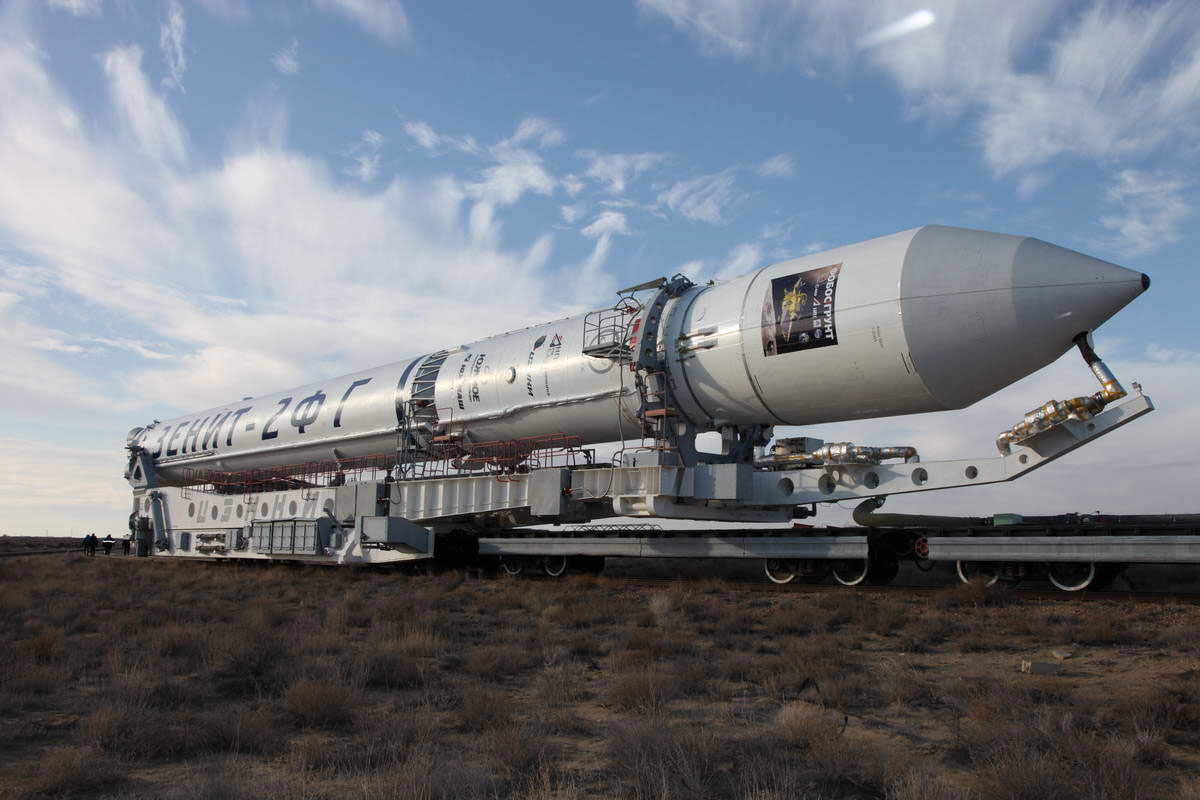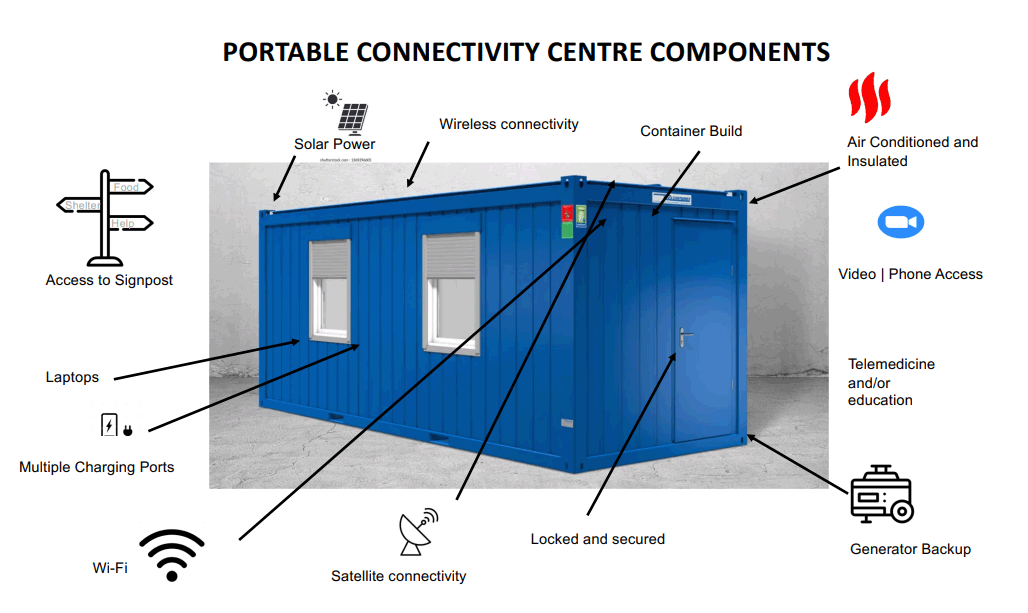Whether by design or circumstances, the space industry has become inextricably involved in the war in Ukraine, and/or the repercussions from it. The launch industry is suffering from major supply issues, joint ventures and partnerships have been canceled. Both of these will have a long-term impact, changing the structure of the industry. In complete contrast, satellites are making a major contribution not only to our understanding of what is happening, but also by providing much needed help to Ukrainian refugees.
Probably, the first thing that springs to mind when thinking of space in the context of Ukraine, would be the images that we are all seeing on a daily basis from Maxar, Capella Space, Planet and other Earth Observation (EO) companies. These before and after images have certainly played a significant role in alerting the world to the devastation on the ground. While the news media is sharing relatively high-level images, EO satellites now have the resolution to hone in to 30 centimeters or less, giving far greater detail to those who need to know. Maxar and Capella Space also use synthetic aperture radar (SAR) to capture images through cloud cover, something that was particularly important at the beginning of the war, as Ukraine is frequently covered by clouds in winter. As well as imagery, other satellites provide advanced geospatial capabilities. Hawkeye for example collects and geo-locates radio signals from 50MHz to 18GHz. As Tony Frazier, EVP Global Field Operations, Maxar Technologies said during Satellite 2022 in Washington DC in March of this year: “The crisis in Ukraine has really been a catalyst for bringing together our industry….for how commercial remote sensing and more advanced geospatial intelligence can be applied to a trending event, where you're having the ability to see, understand and interpret activity from space, to really deliver insights to those in need.”
On a more negative note the war is having serious and far reaching consequences for international cooperation, as evidenced by the number of agreements that have been canceled since the war began. The space industry has generally considered itself to be independent of conflicts on the ground, nowhere is this more clearly evidenced than in the International Space Station (ISS) a cooperative venture between 15 countries, including Russia and the US. Cooperation that was tested, but survived the Russian annexation of Crimea in 2014. So far, it has survived the war in Ukraine, but not without significant bluster coming from Dmitry Rogozin, head of Roscosmos, who at times has implied amongst other things, that if sanctions continue, Russia may let the ISS “fall to the ground.” However, whilst Russian propulsion systems do keep the ISS in orbit, this would hardly be in Russia’s best interest given that it also has cosmonauts aboard. SpaceX has indicated that its Dragon capsule that already docks with the ISS could provide the necessary thrust if need be. NASA, meanwhile has remained calm and indicated that everything is proceeding as normal. And indeed, this seems to be the case. In spite of the blustering, there is still a multi-national crew on board and a NASA astronaut, along with two Russian cosmanauts, was returned to earth by the Russian Soyuz spacecraft at the end of March.
However, other joint ventures have not fared so well. ExoMars, a joint European Space Agency (ESA)/Russian venture to launch a Mars rover that would look for extraterrestrial life has been canceled. Germany has turned off its eROSITA telescope which is part of Spektr-RG, a joint space observatory with Roscosmos. Luna-25 a Russian spacecraft due to launch later this year, was to have carried a navigation camera (PILOT-D) from ESA to collect images during the landing which would have been used to support ESA’s work developing a precision lunar landing system. ESA has requested that the camera be removed and put in safe storage until it can be returned. ESA was also due to supply a payload for a later launch of Luna-27. This payload (a drill and an instrument to study lunar volatiles) has now been transferred to NASA.
The launch industry, has long been a showcase of international cooperation; many international launches take place at Roscosmos’ launch facility in Baikonur, Kazakhstan, and many European launches use Russian rockets. Going forwards, this cooperation is unlikely to continue. In response to sanctions, Roscosmos refused to launch 36 of OneWeb’s satellites unless the British government withdrew its investment in the constellation. In a surprising show of industry cooperation, these are now being launched by SpaceX, owners of Starlink, a competing broadband LEO constellation. Additional launches will be provided by India. Roscosmos also canceled all Soyuz launches that were scheduled to take place in the European Spaceport operated by Arainespace in French Guyana. The western launch industry has suffered further setbacks, as Russia has refused to deliver rocket engines used by both Northrop Grumman and United Launch Alliance (ULA).
 |
| Pre-war Ukraine had a thriving space industry. The Yuzhnoye State Design office is considered one of the best design bureaus in the world, and Yuzmash another state enterprise produces launch vehicles and spacecraft. Its Zenit (pictured above) and Cyclone booster rockets are used by many western companies. |
Pre-war Ukraine had a thriving space industry. The Yuzhnoye State Design office is considered one of the best design bureaus in the world, and Yuzmash another state enterprise produces launch vehicles and spacecraft. Its Zenit and Cyclone booster rockets are used by many western companies. It also produces the thruster for the fourth stage of the Vega and has a contract to produce 20 of these. Orbital ATK developed the Antares booster with help from Ukraine. Yuzhnoye designed it and Yuzmash manufactured it. Since 1991 more than 162 rockets and over 370 spacecraft have been produced with either design help and/or components from Ukraine. Unfortunately, the current situation in the country means that it is now impossible to rely on Ukraine being able to fulfil its contracts, so companies are searching for alternative solutions. As Josef Aschbacher, Director General ESA which relies heavily on Vega, said "We now have sufficient engines for 2022 and 2023. We are working on options for 2024 and onwards based on different technologies." Obviously, this is a sound commercial strategy, but will be a double blow down the line for industries emerging from the war, to find that they have lost key customers.
At the end of 2019, Ukraine changed the law to allow commercial companies to enter the space business. In the nearly three years since this happened, a number of interesting startups have sprung up. These include Promin Aerospace, which is developing a “self-devouring” rocket engine for launch vehicles. Essentially the rocket’s hull is made of solid fuel, such that the rocket consumes itself as it launches. Other startups include Kurs Orbital aiming to develop in-orbit servicing and Orbit Boy, which is developing a microsatellite air-launch system for European customers.
Another startup, Lunar Research Service was about to ship its first batch of nanosatellites to its backers, when the war started. Priorities were changed and instead of going to the customers, the satellites were disassembled and the components given to the military. In total the company donated nearly 17,000 satellite batteries to power flashlights and radio transmitters, and GPS equipped long-range communication models. The company’s 3D printers are now being used to make parts for periscopes and guns. Lunar Research Service only had 12 employees and several of these volunteered for the Ukrainian defense forces.
At the time of writing the current state of Ukrainian facilities is unknown. Reports from a month ago, indicated that work was continuing in the state-run industries despite the war. All four of the commercial companies mentioned here, have recent social media posts. Compared to other countries the Ukrainian state-run space industry, was already underfunded, so it is questionable as to how it will fare after the war. Even if the all the facilities of both state-run and commercial enterprises survive intact, sadly, it is unlikely that all the staff will, given the vast numbers of Ukrainians that are now directly involved in defending the country. Loss of personnel would be a particularly hard blow for the startups, which typically depend on just a few key individuals.
As mentioned earlier, satellites are making a major contribution to our understanding of what is happening on the ground in Ukraine, but the contribution goes far further than photography and electronic eavesdropping. Satellites continue to supply communications to the country, most particularly in areas where terrestrial communications have been rendered inoperable. Starlink, is the most well publicized service provider, having donated 5,000 terminals, initially solely for government use, but now for private use as well. USAAID funded some of these, although the precise nature of the agreement with Starlink is unclear. Many other satellite companies have footprints that cover Ukraine and were providing service there before the war. It is safe to assume that wherever possible, they have continued to do so.
One of the most heartwarming examples of the impact that satellites are having on the current situation, is the role that they are playing in helping refugees. The N50 Project, which is managed by Geeks without Frontiers, is in the process of installing Portable Connectivity Centers (PCC) for refugees fleeing Ukraine. Initially ten PCCs will be installed in border countries where there are large concentrations of refugees, along transit routes and co-located with community centers serving refugees. But in the future, PCCs will also be located in Ukraine, to provide services where the infrastructure has been destroyed.
The PCCs, which are essentially converted shipping containers, are being produced in Krakow at a cost of ~ US$100,000, and shipped to the
 |
| The N50 Project team is collaborating with a coalition of partners to develop and implement Portable Connectivity Centers (PCC). These PCCs are designed to help provide essential power and connectivity for refugees, fleeing the Ukraine to neighboring countries. |
final destination by truck or train. The whole process takes between four and six weeks. The PCCs provide power, WiFi connectivity, charging stations and laptops so that refugees can contact friends and family left behind and find out about locally available resources for shelter, food and water. In addition, telehealth services will be available for anyone that needs medical assistance. In the second phase the PCCs will be customized to meet local needs, providing distance learning for example.
Unsurprisingly, connectivity to the PCCs is provided by satellite. Not only does that mean that the PCCs can be installed anywhere, regardless of the local infrastructure, it makes them resilient to any future disruption of terrestrial service, and portable so that they can be moved in sync with demand. The equipment and airtime for the PCCs are being funded by generous donations from the industry.
In the last few days Viasat, has announced that it has partnered with the Košice region in Slovakia, to provide community internet service for refugees.
In addition, a group of industry players including: HawkEye 360, National Security Space Association, Capella Space, Maxar, Rocket Lab and Viasat have come together to form the Space Industry for Ukraine (SIFU). This is designed to be a short-term initiative to provide immediate humanitarian aid to the people of Ukraine. To date SIFU has raised nearly US$1 million. Companies joining the initiative make a one-time pledge of US$50,000. Initial projects include, acquisition and delivery of medical and food supplies to Ukraine and Poland, Communication hardware and funding of operating costs to help NGOs working in the region, construction and operation of mobile medical facilities and general support for the evacuation of Ukrainian refugees.
It is too soon to know what the ultimate impact of the war will be for the space industry. Inevitably, joint ventures and international partnerships, once considered to be a good thing, will be reconsidered. It is however, heartening to know, that as always, when there is a major disaster, whether natural or man-made, satellites will always be the first means of providing much needed communications.
--------------------------------------------
 Elisabeth Tweedie has over 20 years experience at the cutting edge of new communications entertainment technologies. She is the founder and President of Definitive Direction (www.definitivedirection.com), a consultancy that focuses on researching and evaluating the long-term potential for new ventures, initiating their development, and identifying and developing appropriate alliances. During her 10 years at Hughes Electronics, she worked on every acquisition and new business that the company considered during her time there. She can be reached at etweedie@definitivedirection.com
Elisabeth Tweedie has over 20 years experience at the cutting edge of new communications entertainment technologies. She is the founder and President of Definitive Direction (www.definitivedirection.com), a consultancy that focuses on researching and evaluating the long-term potential for new ventures, initiating their development, and identifying and developing appropriate alliances. During her 10 years at Hughes Electronics, she worked on every acquisition and new business that the company considered during her time there. She can be reached at etweedie@definitivedirection.com





